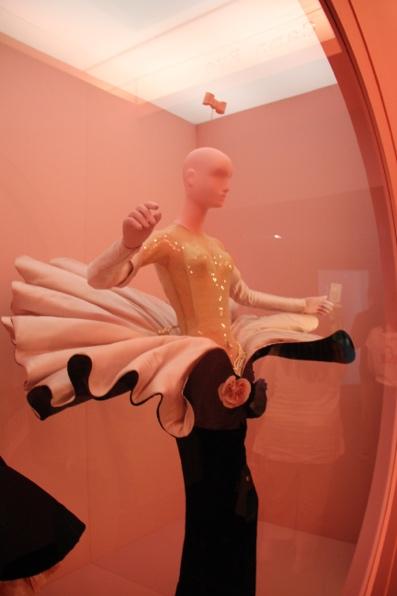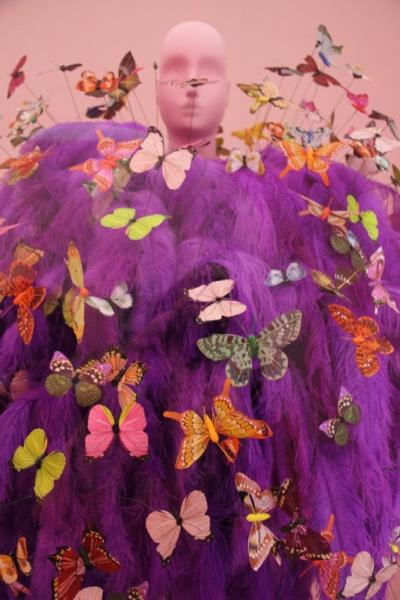Excluding Black Camp isn’t “Camp”.
“The hallmark of Camp is the spirit of extravagance. Camp is a woman walking around in a dress made of three million feathers.” wrote Sontag.
Museum practices haven’t been kind to artists of colour, women and artists in the queer community. Rarely using the stories and experiences of the aforementioned groups for anything more than publicity. A majority of these traditional museums don’t comment on the current political and social climate either; further alienating minority groups.
Camp: Notes on Fashion; the costume institute at the Metropolitan Museum of Art’s latest exhibition curated by Andrew Bolton, seemed to bring a necessary change to the apolitical art institution. The annual exhibition and accompanying gala draw attention to the role of fashion in art and culture. This year the exhibition delves into the deeply complex and densely layered sensibility named “Camp”. Bolton uses Susan Sontag’s seminal 1964 essay Notes On “Camp” as the foundation upon which the exhibition is built and through his curatorial practice analyses, defines and most importantly contextualizes camp as it had once existed and continues to exist in 2019.
The first half of the exhibition introduces the viewer to camp as a multitude of concepts, presented in the context of historical events and mediums: nude sculptures, paintings and garments. The exhibition creates conceptual contrast cleverly through the initial gallery by placing objects of history together with contemporary clothing that emulate its history. This can be seen particularly through the comparison of drag queens, Ernest “Stella” Boulton and Frederick “Fanny” Park to mannequins draped in Erdem’s 2019 taffeta gowns. The 1860s photograph of said drag queens is recreated through the manner in which the mannequins interact with each other.
(Image: Zara Afthab)
(Image: Essex Record Office)
As I moved further along the exhibition, the rooms become more and more open. Initially, the gallery was constructed with narrow corridors allowing almost no space. This was no coincidence, Bolton mentioned in his inaugural speech that this was a deliberate choice to emphasise the secretive, underground world of camp that existed before the 1960s.
The Sontagian room shifts the ideals of camp to the mainstream-depicted in part through the bigger space. Similar to its written counterpart this section of the exhibition does a good job of sorting out camp; defining what it is versus what it isn’t. The room uses objects and excerpts from the essay to further describe camp. For instance, the feathered blush pink Balenciaga dress accompanied by a photograph of Jayne Wrightsman in the same ensemble is a homage to two specific points raised by Sontag.
(Image: Photographed by Cecil Beaton, Vogue, October 1966/ Image: Zara Afthab)
“The hallmark of Camp is the spirit of extravagance. Camp is a woman walking around in a dress made of three million feathers.” wrote Sontag. The comparison here to the garment is blatantly obvious. Less evident is the second point I associated with the garment-the changing nature of camp. The feathered dress may not be “camp” by today’s standard but at the time, it was all things extravagant and over the top.
(Image: Zara Afthab )
The narrow passageway that connected the world of Sontag Camp to its contemporary counterpart explored Sontag’s principle of naïve camp or “Failed Seriousness”. This section of the exhibition paired garments from Sontag’s world to garments from the current fashion landscape, bringing together the sensibilities in an extravaganza of couture garments. These garments are labelled naïve camp as they are intended to be serious but, in its attempt, to do so are exaggerated and perhaps the purest expression of camp.
The sound of an older Judy Garland singing ‘Somewhere over the Rainbow’ reverberated through the last gallery. This room was a double decker installation of colourful, pastel boxes that carried 130 articles of clothing and accessories. These clothes albeit beautiful, extravagant and yes camp in its innate soul, lacked the same carefully curated and contextual backing the previous sections possessed. It lacked in its cultural significance and political undertones. There are so many garments in the final room that it seems unnecessary- it began to represent a showroom of extremely expensive clothes. These clothes moved straight from the runway to the vitrines; lacking an innate personality that was expected from an exhibition on camp. I expected more streetwear or an homage to knockoffs. Something more disruptive, shocking and well more…camp.
(Image: SZ-Mag)
Initially, my reaction to the final room reflected a kid in a candy store; my senses were heightened. In part due to the sheer number of garments- the music and the overall atmosphere. I felt giddy and the people around me embodied the same sentiment; we were awestruck. But upon further reflection, the exhibition isn’t without its fair share of faults.
Bolton’s overall attempt to explore camp as it exists presently falls painfully short. This is the Costume institute’s first explicitly queer exhibition so I was disappointed to see that black queer culture was hardly represented. The lack of designers of colour was another shortcoming. More importantly, the concept of camp is deeply rooted in subversion. Its history and earliest participants intertwined with injustice. Therefore, it is laughable that an exhibition dedicated to camp, deemed the display of an undue amount of Moschino more important than a homage to black culture.
One doesn’t have to look further back than the rise of disco in the 1970s, drag ball culture in the 1980s and hip-hop in the 90s to discover that several facets of black culture are intrinsically camp. Black camp more so than any other category of camp is rich with political messaging. These artists explore identity beyond racial stereotypes and claim an individualistic style. These artists and overarching art movements were pioneers in revolutionizing culture as it was once known. Josephine Baker’s lasting influence on the jazz age, drag aesthetics, mimicry and gender norms is just one example of how fundamental black camp is to couture and popular culture today.
(Image: AnOther Mag)
The exhibition had its many positives, the attention to detail in the first sections were particularly striking. However, the lack of diversity is unforgivable especially keeping with the theme. When it comes to reflecting minorities; Camp: Notes on Fashion, The Metropolitan Museum of Art and almost every major art institution falls short.
By Zara Afthab
(she/her)
Zara is the Fashion and Beauty Editor @ PARDON!
Read more about her on OUR TEAM! page.









